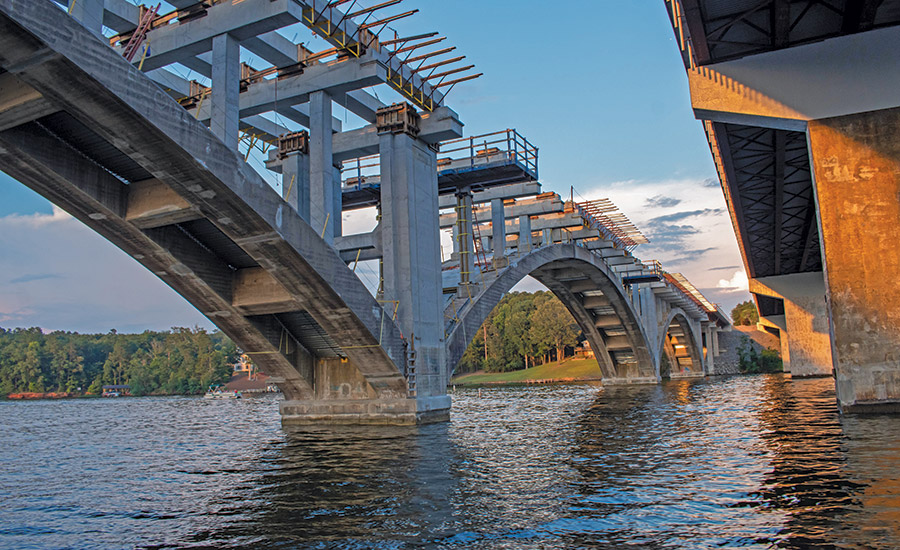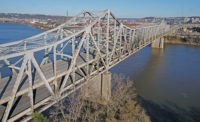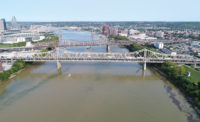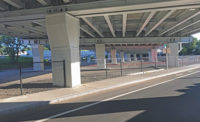Lake Tillery Rehabilitation
Albemarle, N.C.
BEST PROJECTS
CONTRACTOR: PCL Construction
OWNER: North Carolina Dept. of Transportation (NCDOT)
LEAD DESIGN FIRM: AECOM
STRUCTURAL ENGINEER: Modjeski & Masters Inc. (M&M)
Originally constructed in 1927, the open spandrel concrete arch bridge is well known to travelers on both land and water. That made maintaining the bridge’s original architectural features a priority for the two-year, $20.2-million structural rehabilitation, which coincided with a separate, concurrent highway project.
Communication was particularly important for this design-build effort as two engineers-of-record were responsible for different aspects of the rehabilitation. Often PCL Construction consulted both engineers to minimize risk and guarantee successful construction. Using this approach, the PCL team streamlined the process of submitting suggested alternative approaches for consideration.
The collaborative approach also helped integrate hundreds of additional owner-approved repairs, identified during an independent preconstruction inspection, into the overall repair strategy. The team also accommodated an owner-requested alternative surface finish on the concrete barrier wall. Because this finish was not common practice, a two-person grinding and patching crew was detailed to work full time for more than six months to complete finishing in accordance with the owner’s expectations.

Photo by My Different Perspective
Because repairs to the bridge’s four distinctive arch spans would require partial demolition and extensive underwater work, the project team sequenced construction to minimize hazards to the area’s large number of boaters and jet ski users. Coordination with the North Carolina Wildlife Resources Commission ensured that up-to-date alerts and information bulletins were posted at marinas and other local boat access points.
With demolition activity taking place just 50 ft above the waterline, buoys and work barges enhanced with lights and signage provided an extra measure of safety to boat traffic.
PCL installed strain gauges into the concrete arch ribs to monitor the stress and movement that each arch experienced during demolition. Because of precise cutting and careful resequencing of demolition, the arch ribs’ internal stresses remained within the engineers’ predetermined allowable tolerances.





Post a comment to this article
Report Abusive Comment